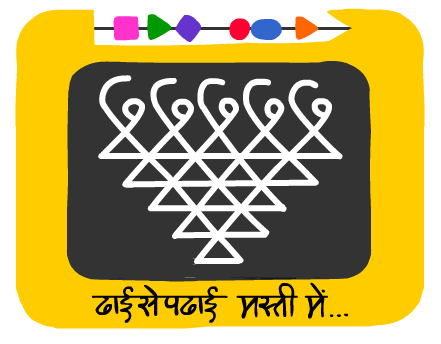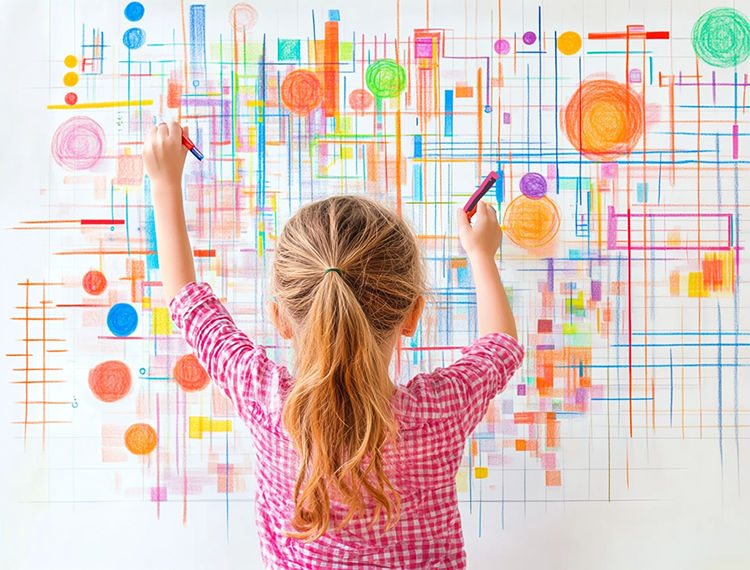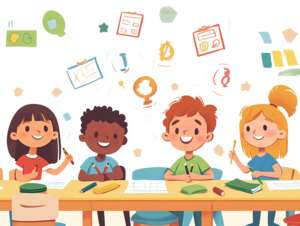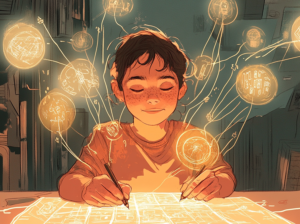Drawing is one of the earliest forms of expression for children. While most kids naturally favor one hand, encouraging them to draw with both hands can unlock a range of developmental benefits. Scientific studies have shown that ambidextrous drawing enhances brain function, learning ability, and creativity.
Let’s explore the 12 key benefits of drawing with both hands, supported by scientific research and real-world examples!
1. Enhances Fine Motor Skills
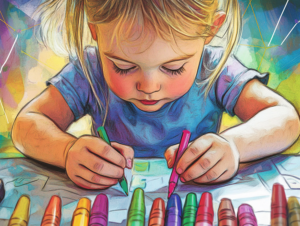
Why it matters: Using both hands strengthens finger muscles and improves grip, making tasks like writing, cutting, and buttoning easier.
🧪 Study: The Development of Fine Motor Skills in Early Childhood – (Lobo & Galloway, 2008)
🔍 Research shows that activities requiring both hands improve fine motor control, benefiting early childhood development.
💡 Try this: Give your child crayons in both hands and encourage them to draw circles or simple shapes simultaneously.
2. Improves Hand-Eye Coordination
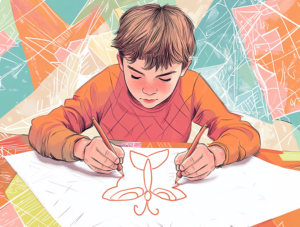
Why it matters: When both hands work together, the brain learns to synchronize movements with vision, enhancing sports, writing, and daily activities.
🧪 Study: The Role of Bimanual Coordination in Hand-Eye Development – (Corbetta & Bojczyk, 2002)
🔍 Children who practice coordinated hand movements develop better visual tracking and reaction time.
💡 Try this: Ask your child to trace a symmetrical butterfly using both hands at the same time!
3. Stimulates Cognitive Development
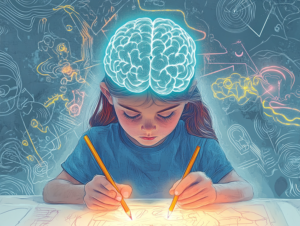
Why it matters: Using both hands engages both sides of the brain, strengthening connections for better problem-solving and thinking skills.
🧪 Study: Brain Lateralization and Cognitive Growth – (Gazzaniga, 2013)
🔍 Ambidextrous activities help bridge the brain’s two hemispheres, boosting cognitive flexibility.
💡 Try this: Encourage kids to mirror-draw an image with both hands and see how their thinking adapts.
4. Fosters Creativity and Imagination
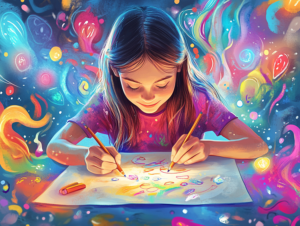
Why it matters: Drawing with both hands encourages children to think outside the box and explore different artistic styles.
🧪 Study: Creativity and Ambidexterity in Children – (Palmiero et al., 2016)
🔍 This study suggests that ambidextrous tasks stimulate divergent thinking, which is essential for creative problem-solving.
💡 Try this: Challenge your child to create two different drawings at the same time—one with each hand!
5. Develops Bilateral Integration
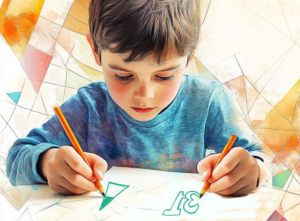
Why it matters: The ability to use both hands in a coordinated way improves motor skills required for sports, music, and daily tasks.
🧪 Experiment: Bimanual Training and Motor Coordination – (Serrien et al., 2006)
🔍 Practicing two-handed activities strengthens coordination, making it easier to perform tasks like tying shoelaces or playing an instrument.
💡 Try this: Have your child trace letters with one hand while coloring a shape with the other.
6. Enhances Concentration and Focus
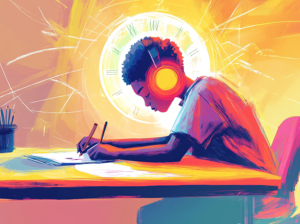
Why it matters: Drawing with both hands forces the brain to stay engaged, improving attention span and focus.
🧪 Study: Impact of Ambidextrous Training on Attention Span – (Khedr et al., 2000)
🔍 Researchers found that children who practiced ambidextrous activities had better focus and longer attention spans.
💡 Try this: Ask your child to copy a simple geometric design using both hands.
7. Improves Visual Analysis and Perception
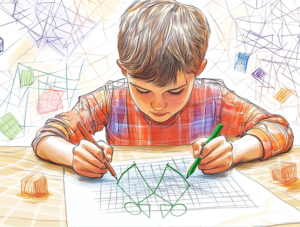
Why it matters: Recognizing patterns, proportions, and spatial relationships is crucial for reading, math, and problem-solving.
🧪 Study: Bimanual Activities and Spatial Cognition – (Vingerhoets, 2014)
🔍 Research shows that symmetrical hand movements enhance spatial reasoning and visual perception.
💡 Try this: Introduce mirror drawing—where both hands create the same image simultaneously.
8. Encourages Emotional Expression
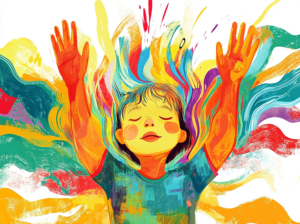
Why it matters: Art is a powerful way for children to express their emotions, thoughts, and feelings.
🧪 Study: Art Therapy and Emotional Regulation in Children – (Malchiodi, 2012)
🔍 This research suggests that drawing can help children process emotions and reduce stress.
💡 Try this: Let your child draw freely with both hands, using colors that represent their mood.
9. Promotes Problem-Solving Skills
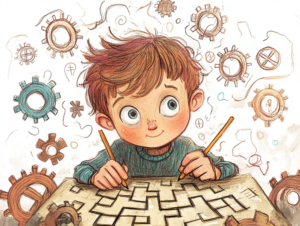
Why it matters: Thinking with both sides of the brain allows children to approach problems from multiple perspectives.
🧪 Study: The Relationship Between Handedness and Problem-Solving Abilities – (Cherbuin & Brinkman, 2006)
🔍 Studies suggest that ambidextrous children develop stronger problem-solving skills.
💡 Try this: Challenge your child to complete a maze using both hands at the same time.
10. Builds Confidence and Self-Esteem
Why it matters: Mastering a unique skill like ambidextrous drawing can boost a child’s sense of achievement and self-worth.
🧪 Study: Impact of Art Activities on Self-Esteem in Children – (Burton et al., 2000)
🔍 Engaging in creative activities fosters confidence and perseverance.
💡 Try this: Celebrate your child’s efforts by displaying their two-handed drawings at home!
11. Enhances Memory Retention
Why it matters: Writing and drawing with both hands strengthen neural pathways linked to memory.
🧪 Experiment: Handwriting and Memory Retention – (Mueller & Oppenheimer, 2014)
🔍 This experiment found that handwriting boosts memory more effectively than typing.
💡 Try this: Encourage kids to practice drawing letters and numbers using both hands.
12. Supports Academic Readiness
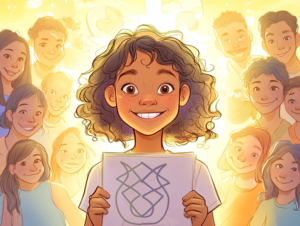
Why it matters: Early exposure to drawing helps prepare children for reading, writing,
and problem-solving.
🧪 Study: The Connection Between Drawing, Writing, and Learning Readiness –
(Puranik & Lonigan, 2011)
🔍 Research suggests that preschoolers who draw regularly develop stronger academic skills.
💡 Try this: Use both hands to trace numbers and letters, reinforcing early learning concepts.
Final Thoughts
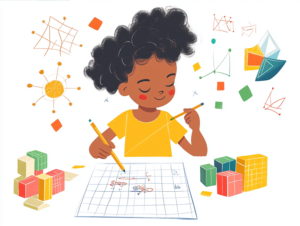
Encouraging children to draw with both hands isn’t just a fun challenge—it’s a scientifically proven way to enhance brain development, coordination, and learning. Whether your child is 1.5 years old or a teenager, this simple activity can provide lifelong benefits!
Want to try some fun two-handed drawing challenges? Let us know in the comments! 🎨✍️
